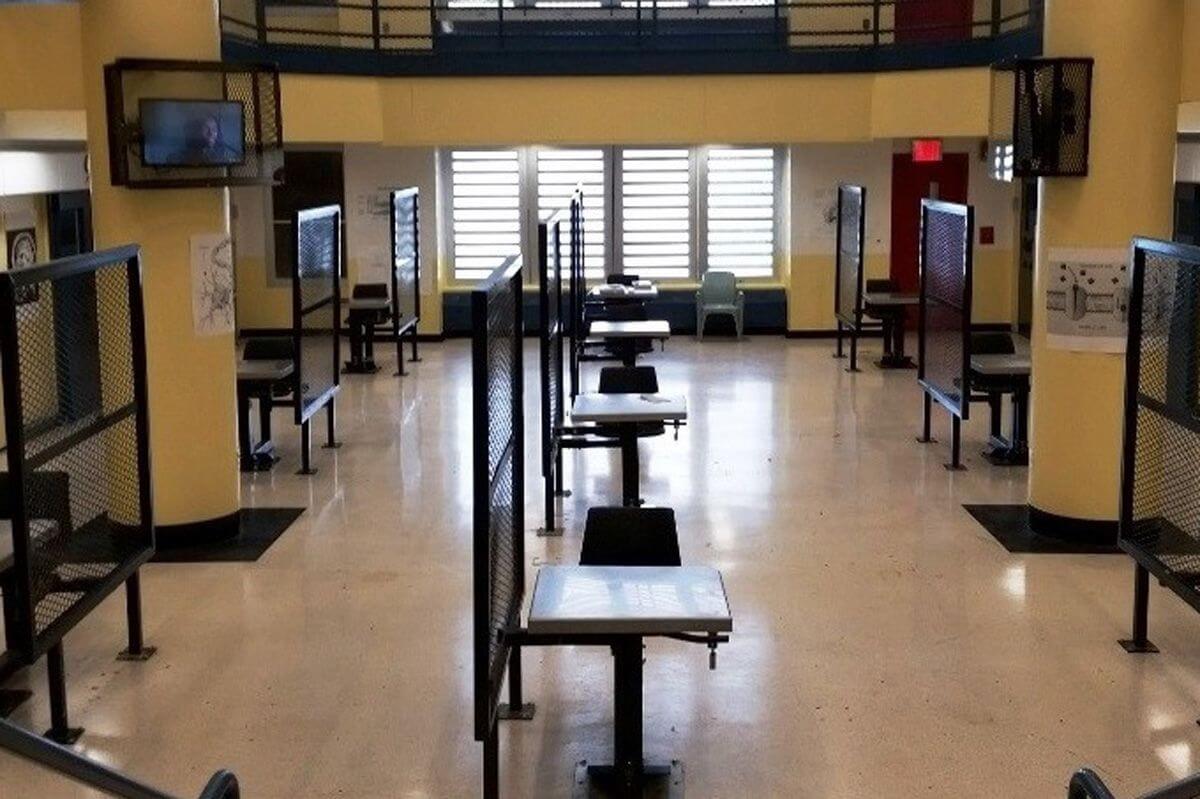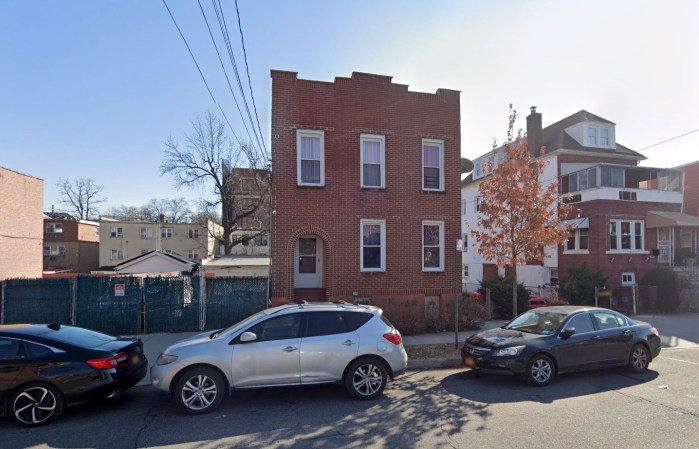This article was originally published on by THE CITY
Last summer, the Adams administration put the brakes on a de Blasio-era plan to eliminate the Department of Correction’s use of medieval-like restraint desks for young adults in specialized units.
In the June 2022 reversal, jail officials said they did not have the proper staff or training to eliminate certain controversial practices, like solitary confinement and the use of specialized chairs with ankle cuffs during various rehabilitation and educational programs.
But the draconian desks have actually led to a new increase in violence with eight people restrained to the chairs slashed over the past two weeks, including two over the prior weekend, according to Department of Correction records.
People in the desks are “just sitting ducks” stuck in one place who don’t have the ability to protect themselves if attacked, said a former Correction Department official who worked for the department when they began to use the restrictive chairs earlier in the de Blasio administration.
The restraint desks are used in Rikers’ Rose M. Singer Enhanced Supervised Housing (RESH) unit, designed as an alternative to solitary confinement, where detainees are mostly confined to their cells but are offered additional programs and counseling. The units are supposed to have more correction officers and support staff to assist people with serious needs.
Seated Arguments
The latest violence — in one of the most scrutinized housing units — comes as a federal judge overseeing the department last month agreed to hear arguments in November in favor of a third-party receiver takeover.
Meanwhile on Sept. 9, a top jail official defended the use of the restraint desks during a Board of Correction oversight hearing in Lower Manhattan.
“We continue to train staff and put additional supervision in those units,” said Chris Miller, deputy commissioner for classification, custody management, and facility operations.
Board Commissioner Dr. Robert Cohen, a frequent critic of the department, urged the agency to stop using the desks, citing the “danger” they pose to people chained to them.
“I respectfully disagree,” Miller responded.
/cdn.vox-cdn.com/uploads/chorus_asset/file/20002714/e1d9ffd12c898794a5357fe5ef67bd86506d_102219_boc_october_meeting_1.w700.a700x467.2x.jpg)
He said jail supervisors are also making a renewed effort to make sure that cell doors in the units where the desks are used remain locked. That prevents any other incarcerated people from roaming — and preying — on those cuffed to the desks, he said.
“I believe that is what is going to be successful for us,” Miller added.
But three days later another detainee cuffed to a desk was slashed during a violent scuffle at 8:39 a.m. inside the RESH, according to internal DOC records.
The incident began when one detainee in a restraint desk began to harm himself by tying a black durag around his neck — and then fell to the floor, jail records state.
Another detainee — in a chair next to him — somehow got out of his own restraint desk, the initial report reads.
Once freed, the second young man, whose name is being withheld, began to slash the other detainee, according to DOC records.
In July, there were eight stabbings and slashings in that same unit, Steve Martin, the federal monitor, testified at a pivotal court hearing on Aug. 10.
“Units that are supposed to be richly staffed, not only with security staff but program staff,” he told Laura Swain, chief judge of Manhattan Federal Court. “It is one of the most high security units in the facility.”
Martin called the violence there “quite disturbing” and questioned what DOC Commissioner Louis Molina was doing to prevent further attacks.
Detainees in the unit who don’t want to be shackled to restraint desks can remain in their individual cells — and skip programming, Miller told the Board on Friday. But incarcerated people seeking to move out of the disciplinary unit must attend programs in order to make their way back to the general population.
Spiking Numbers
Overall, Rikers is on pace to record over 300 stabbings and slashings this calendar year — and 6,000 uses of force by officers, according to Jeffrey Powell, an assistant U.S. attorney in Manhattan.
“These numbers are just simply unheard of in any other system,” Powell testified last month.
/cdn.vox-cdn.com/uploads/chorus_asset/file/24692054/52200472066_74d6468c3f_o.jpg)
There were 123 stabbings and slashings at Rikers in fiscal year 2020, 247 in 2021, 491 in 2022, and 387 in 2023, according to the most recent Mayor’s Management report.
Powell’s boss, U.S. Attorney Damian Williams, supports the appointment of a receiver to manage Rikers.
Some of the violence in city jails this year is tied to Molina’s decision to leave security posts unmanned, Powell said last month.
There were 671 total unmanned posts throughout the department in May, according to a report filed by the federal monitor in July.
‘Tools of Slavery’
As for the desks, the department initially began using them in 2015 shortly after the department began to limit the use of solitary for teen detainees and people with mental illness.
Jail officials have contended they actually make incarcerated people feel safer and more willing to attend programs and classes.
“They feel more comfortable knowing that everyone is in restraints,” Winette Saunders, the former head of the DOC’s youth programming testified before the Board of Correction in 2017.
/cdn.vox-cdn.com/uploads/chorus_asset/file/20002231/251d38cff734cad19d3a4c6112b53bfe75e8_rose_singer_center.jpg)
But initially jail officials didn’t have rules for how long people could be left in the desks or how they could make their way out of them, according to the former jail official familiar with the rollout.
The desks cost $1,700 each and are made by state prisoners who are enrolled in the Corcraft work program.
The BOC in 2021 had proposed to eliminate their use as part of the broader plan to strictly limit solitary confinement.
But that plan, known as the Risk Management Accountability System, was put on hold in June 2022.
Martin, the federal monitor overseeing the department, strongly urged the city to postpone the plan, saying it “poses significant safety concerns.”
Mary Lynne Werlwas, director of the Prisoners’ Rights Project at Legal Aid, decried the continued use of the restrictive desks.
“Because jail managers cannot get correction officers to stay on post actively supervising housing areas, they are chaining people of color to furniture to manage the jails,” said Werlwas, who is leading the charge in court for a federal receiver to take over the DOC.
“Not only does this make it impossible for people to protect themselves,” she added, “but it uses tools of slavery that have no place in modern governance.”
THE CITY is an independent, nonprofit news outlet dedicated to hard-hitting reporting that serves the people of New York.
Read more: New Pedestrian Plaza Opens on Brooklyn’s Underhill Avenue





































